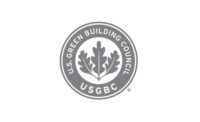The U.S. Green Building Council released its ranking of the top 10 countries for LEED outside of the United States, demonstrating the global reach of the movement that is transforming the built environment into healthy, high-performing structures that benefit the planet and all of its people.
“The global community is increasingly recognizing the imperative for action as we combat the extraordinary challenge of worldwide climate change,” said Rick Fedrizzi, president, CEO and founding chair, USGBC. “LEED’s success across a wide variety of cultures, climates and communities represents not only a growing recognition of its demonstrated benefits for human health and operational cost savings, but also its unparalleled potential to be part of the solution to a warming planet and rising sea levels.”
The list of the top 10 countries for LEED reflects the global adaptability of the world’s most widely used and recognized system guiding the design, construction, operations and maintenance of green buildings. To date, projects teams in more than 140 countries and territories have implemented LEED in their building projects, taking advantage of its global, regional and local applicability to create structures that mitigate greenhouse gas emissions; create healthier indoor environments for workers, students and community members; and lower utility bills for building owners through reduced energy and water use.
The ranking of the top 10 countries for LEED outside of the U.S. is based on cumulative gross square meters (GSM) of space certified to LEED in each nation as of April 2014.
Canada tops the list, with 17.74 million GSM of LEED space. Collectively, Canada boasts 4,068 total LEED-registered and -certified projects, representing 58.66 million total GSM of LEED space.
China and India, two of the world’s fastest growing economies and rapid adopters of sustainable building practices, took second and third place on the list, respectively boasting 14.30 million and 11.64 million GSM of LEED-certified space.
Other Asian nations in the top 10 include South Korea, at No. 4 with 3.84 million GSM of LEED-certified space; Taiwan, at No. 5 with 2.98 million GSM; and Singapore, at No. 8 with 2.16 million GSM.
In Europe, Germany and Finland secured spots 6 and 10, respectively—Germany with 2.90 million GSM of LEED-certified space and Finland with 1.45 million.
In South America, Brazil stood at No. 7 on the list, with 2.85 million GSM, while the United Arab Emirates represented green building success in the Middle East, at No. 9 with 1.82 million GSM of LEED-certified space.
The full ranking is as follows:
| Rank | Nation | GSM of LEED-certified space (millions) | Total GSM of LEED-certified and -registered space (millions) | Total number of LEED-certified and -registered projects |
|---|---|---|---|---|
| 1 | Canada | 17.74 | 58.66 | 4,068 |
| 2 | China | 14.30 | 96.22 | 1,638 |
| 3 | India | 11.64 | 66.22 | 1,657 |
| 4 | South Korea | 3.84 | 16.61 | 242 |
| 5 | Taiwan | 2.98 | 6.97 | 114 |
| 6 | Germany | 2.90 | 7.32 | 365 |
| 7 | Brazil | 2.85 | 23.24 | 829 |
| 8 | Singapore | 2.16 | 3.86 | 91 |
| 9 | United Arab Emirates | 1.82 | 47.16 | 850 |
| 10 | Finland | 1.45 | 3.56 | 148 |
Notable certified projects in these nations include:
- Canada: 100 Wellington Street West Tower at the Dominion Centre in Toronto, LEED Platinum, the first project in the city to achieve Platinum certification under LEED for Existing Buildings: Operations & Maintenance
- China: Haworth Showroom in the Parkview Green in Beijing, LEED Gold, the first project to certify under LEED v4, the latest version of LEED
- India: ITC Maurya Hotel in New Delhi, built in 1977, Platinum under LEED for Existing Buildings: Operations & Maintenance
- South Korea: Samsung GREEN TOMORROW, the first LEED Platinum project in East Asia
- Taiwan: Taipei 101, one of the tallest buildings in the world, LEED Platinum under LEED for Existing Buildings: Operations & Maintenance
- Germany: MesseTurm in Frankfurt, an iconic 63-story skyscraper and one of the tallest in Europe, LEED Silver
- Brazil: Castelao Arena in Fortaleza, the first 2014 World Cup stadium to earn LEED certification
- Singapore: Asia Square Tower 1, a 43-story office building, LEED Platinum
- United Arab Emirates: Dubai Electricity and Water Authority Headquarters, LEED Platinum
- Finland: Sello shopping center, the first European shopping mall to receive LEED Gold
Collectively, more than 59,000 commercial and institutional projects are participating in LEED, representing 967 million GSM of construction space worldwide.
In June 2013, USGBC launched the LEED Earth campaign, offering free certification to the first projects to certify in the more than 100 countries where LEED has yet to take root. Since then, 15 projects in various nations have earned free certification, including Venezuela and Kuwait.
To learn more, visit USGBC.org/LEEDEarth.






